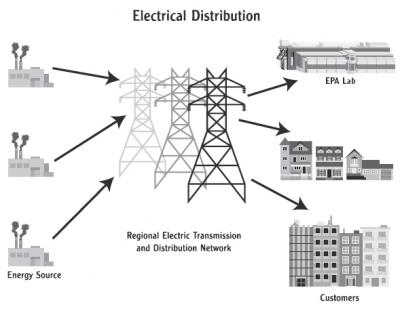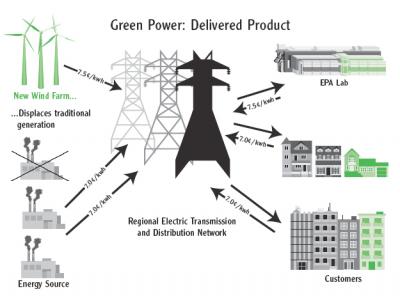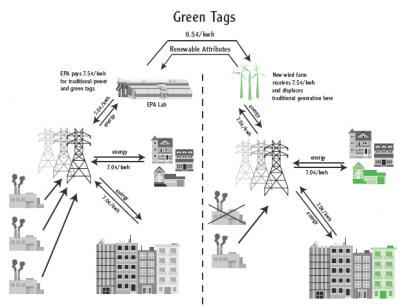I recently got this email from Art.
I am confused when I see “Vail Resorts: 100% Powered by Wind” and then read that the mechanism is some sort of credit.
Is there a simple explanation of the difference between buying credits and actually using wind power?
Art
I have also recently gotten some comments from Rosa asking about green credits or green tags.
Green Tags
Green tags, or green credits, or Renewable energy credits, are often used by companies to claim they are offsetting there carbon emission by using green power. The difference between green power and green tags can be subtle, but here is some info that will help understand the difference.
First some info from the EPA click here for the full pdf, click on images below for full size image.
Green Power: Tags vs. Delivered Products
The benefit of green power (whether it is a delivered product or a green tag) is that electricity generated by a source that has lower emissions and/or fewer environmental impacts reduces the need for electricity generated by a source that causes higher emissions and/or has greater environmental impacts. The difference between green power as a “delivered product†and a “green tag,†however, can be subtle and complicated.
The Basics: Electrical Transmission and Distribution
Electricity enters the power grid through a large number of power generation plants. These plants supply electricity to a large network of transmission and distribution lines, which transmit energy to thousands of end users. Since the electricity from each power plant flows throughout the entire distribution system, end users have no way of knowing which plant generates their power. For example, if ABC Utility Co.’s distribution network is fed by three power plants, a customer of ABC could receive electrons from any or all of the three sources.
The Two Types of Green Power: Delivered Products vs. Tags
To understand the following examples, assume the following:
1) Green power generally costs slightly more than the market rate for conventional power,
2) The market price of conventional electricity is 7 cents per kilowatt hour (kWh), and
3) The cost to produce wind power is 7.5 cents per kWh.
Delivered Product
When we say green power is delivered or is a “delivered product,†it means that the green power is fed into the same electric transmission and distribution system that serves the end user. For example, a local wind farm feeds its generated power into the local transmission and distribution system of the local utility, which sells and delivers electricity to a local EPA laboratory. Since the wind power enters the same grid from which the laboratory receives its electricity, the laboratory is said to receive a “delivered†product. While there is no direct electric line between the green power source and the purchaser, green power enters the local grid and replaces electricity that would have been generated from power sources with greater environmental impacts. The purchaser of green power pays more (7.5 cents per kWh) because it costs slightly more to produce the green power.
Green Tags
Suppose now that the EPA laboratory wants to buy green power, but cannot obtain a “delivered†green power product from its local electricity supplier. EPA can still obtain the environmental benefits of green power through the purchase of “Green Tags†from a wind farm owned by another utility and located in another state. That utility is not interconnected with the local utility supplying the EPA laboratory. The EPA laboratory will continue to buy electricity generated by conventional sources from its local utility at the market rate of 7 cents per kWh. EPA will also buy Green Tags from the wind farm in the adjacent state for 0.5 cents per kWh. The wind farm sells its power to its local customers at 7 cents per kWh (the market rate for conventional electricity) and its environmental attributes from the wind farm to EPA for 0.5 cents per kWh. The wind farm receives the full cost of producing wind power (7.5 cents per kWh) and displaces the high emissions of a conventional power plant. EPA receives conventional power, but it also achieves the emissions reductions associated with the wind farm, i.e. the Green Tag, for a total cost of 7.5cents per kWh. In each case, generation from a source with greater environmental impacts is replaced by that of a source with fewer environmental impacts.
See also:
Wikipedia article on green tags
American wind energy association article on buying wind tags


